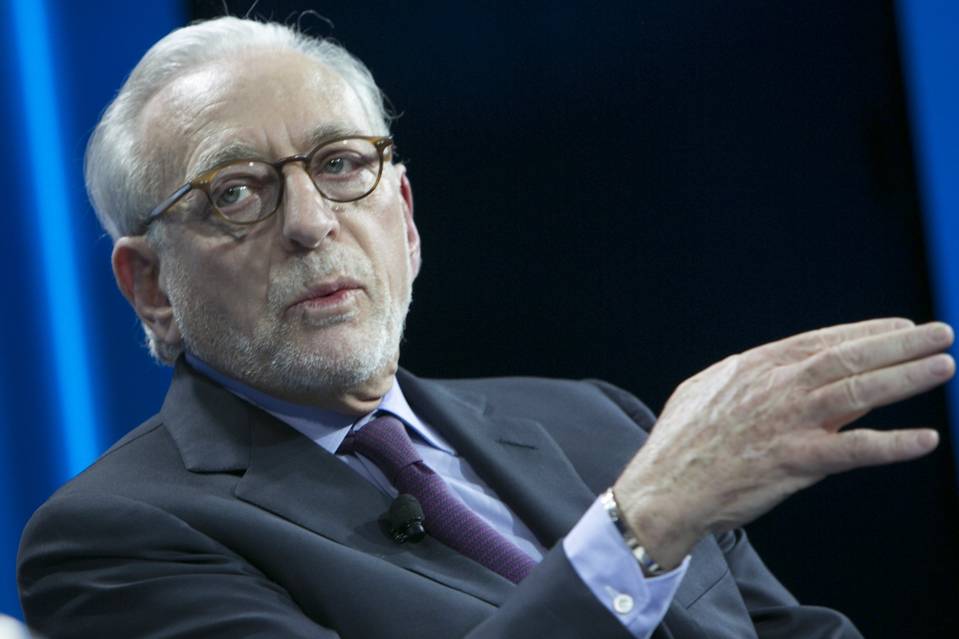
Investor Nelson Peltz plans to launch a fight for a board seat at Procter & Gamble Co.PG 0.46% , in an effort to jolt the consumer-products giant whose sales and profit growth stalled, according to people familiar with the matter.
The move would make P&G , PG 0.46% with a market value of $222 billion, the largest company ever to face a proxy fight. Should Mr. Peltz’s Trian Fund Management LP win, which is far from guaranteed given how much support it must gain from other shareholders, it would mark a new milestone for a shareholder-activism movement that has shaken up some of the biggest U.S. companies in recent years.
Trian, which owns roughly $3.3 billion of P&G stock, will seek a single seat for Mr. Peltz in a shareholder vote at the company’s annual meeting, likely in October, the people said. It is expected to disclose the campaign Monday, they added.
After nearly five months of discussions, P&G last week rejected a demand from Trian to name Mr. Peltz a director, the people said, setting the stage for what could be months of public debate over how to get the maker of everything from Tide detergent and Gillette razors to Pampers diapers on a stronger growth trajectory.
In a statement, P&G said: “The Board is confident that the changes being made are producing results, and expresses complete support for the Company’s strategy, plans, and management.”
P&G’s sales growth has been lackluster amid a sluggish global economy, pricing pressure and competition from well-funded startups. It faced an earlier activist approach from William Ackman and has cycled through leaders as the stock price has lagged.
P&G shares have underperformed the S&P 500 and the consumer-staples group for the past 10 years. They have returned about 4% to investors over the past 12 months, including dividends, compared with a 16% return for the S&P 500.
Trian and P&G agree on some steps the company needs to take, such as cutting costs and restructuring management, and the investor supports Chief Executive David Taylor and the company’s 11-person board. It isn’t seeking a breakup as some analysts have speculated since the investment was disclosed in February.
Trian has told P&G if it were to win a seat at the annual meeting, it would seek to renominate whoever lost, the people said, expanding the board by the one seat.
Still, Trian believes P&G has failed to move fast enough to arrest its market-share losses and convert cost cuts into profit, questioning the credibility of the company when it comes to carrying out promises.
“We need a game-changing attitude at P&G,” Mr. Peltz said in an interview. “We just can’t keep going along the same path,” he said, adding that he sees the board as well-intentioned.
Since Mr. Taylor took over in November 2015, P&G has moved to restructure management responsibilities, bring in outside talent, drop brands and cut some $10 billion in annual expenses by 2021. That’s on top of the $10 billion the company says it already eliminated since 2012—by cutting 24,000 jobs globally, shedding 14 factories and more than 100 brands to refocus on its most lucrative businesses.
Yet sales and profit growth have remained elusive. The company reported earnings of $13.4 billion for its fiscal 2016, slightly less than the $13.8 billion it notched five years earlier. Organic sales growth, a closely watched metric that excludes acquisitions or divestments as well as currency swings, has been stuck between 1% and 3% in recent years, well below prerecession levels. In the March-ended quarter, organic sales rose just 1%.
Mr. Taylor has said the company was failing to deliver and “we need to bring our standards up.”
Trian will need to garner widespread investor support to succeed. Even though the investment is its largest ever and the fifth-biggest P&G holding overall, it still amounts to only about 1.5% of the company’s market value.
Trian will have to convince investors that Mr. Peltz’s experience—and stock gains—at consumer giants like Mondelez International Inc. and H.J. Heinz Co. —recommend him for a board stacked with well-known business leaders.
Those arguments didn’t persuade P&G’s board in private discussions. Over roughly half-a-dozen meetings and conversations, Trian laid out its concerns while P&G detailed its own views, but the sides didn’t come to an agreement, the people said.
Last Tuesday, in a meeting with several directors and Mr. Peltz, P&G said it wouldn’t give him a seat and that it wanted time to prove management could boost results, the people said. The board also refused to commit publicly to adding Mr. Peltz if the company missed its targets this year, they said.
The activist is focused on the structure of P&G’s leadership. Historically, there have been executives who run business units and others who are in control of sales and marketing, which Trian argues clouds who has ultimate responsibility for profits.
Mr. Taylor has looked to address this concern already. Regional units have been handed more autonomy in bringing their products to market and executives say profit-and-loss responsibility now lies at the feet of category leaders.
Trian also zeroed in on P&G’s costs, questioning how a market powerhouse that commands prices far exceeding those of rivals, on average, doesn’t have the best profit margins.
P&G has increased operating profit margins, to 20.6% last year from 19.1% in 2011, and says it ranks third in the industry—behind competitors that also charge high premiums. It has said the $10 billion it will cut by 2021 will come from reducing billions in spending on packaging, supply-chain costs and marketing.
Trian says the previous $10 billion in cost cuts didn’t translate into profit growth even after taking into account surging foreign-currency costs and it wants to ensure the current plan increases the bottom line.
“We can’t have what happened last time happen again,” Trian co-founder and Chief Investment Officer Ed Garden said in an interview.
—Sharon Terlep contributed to this article.
[“Source-wsj”]




